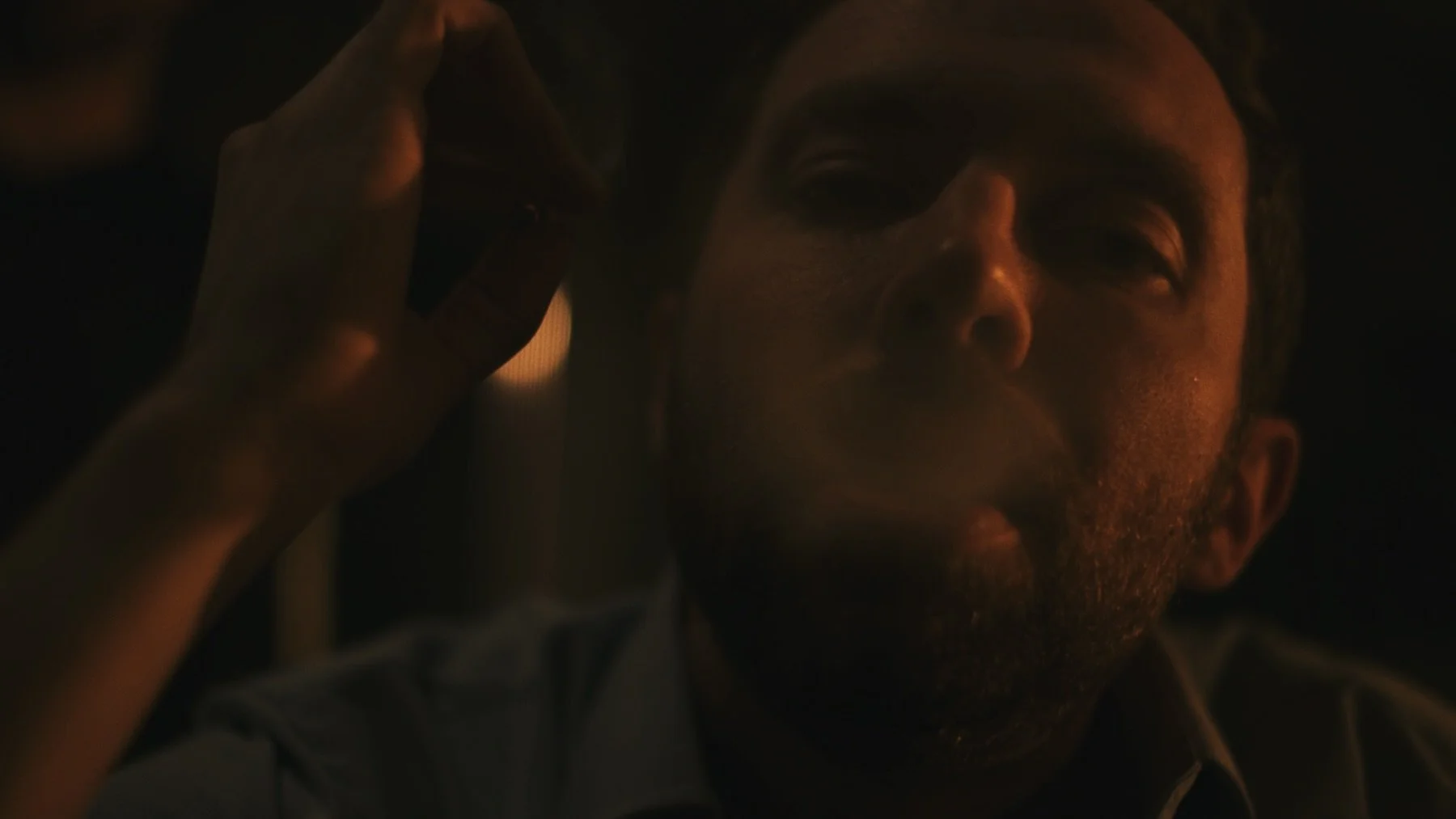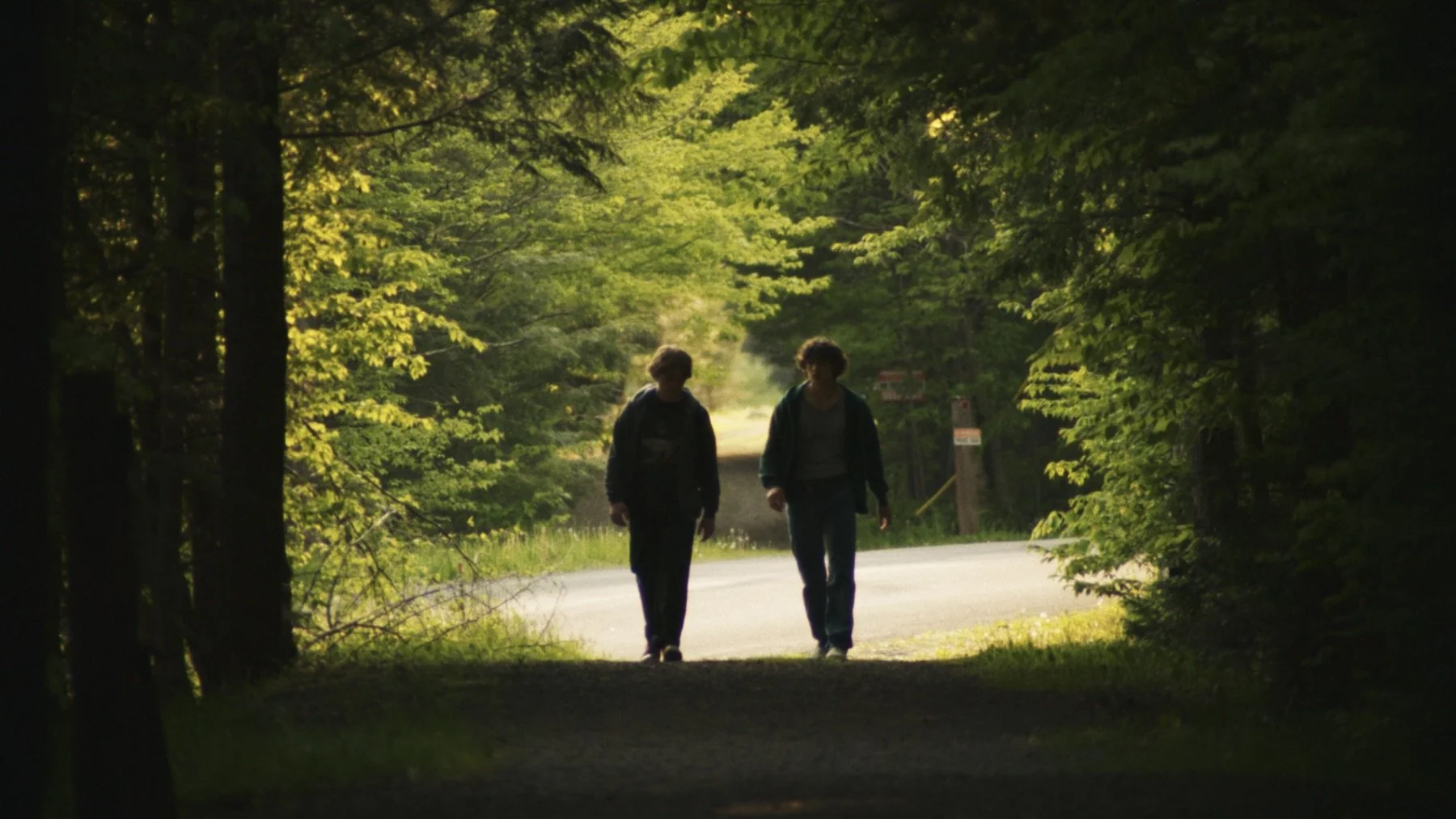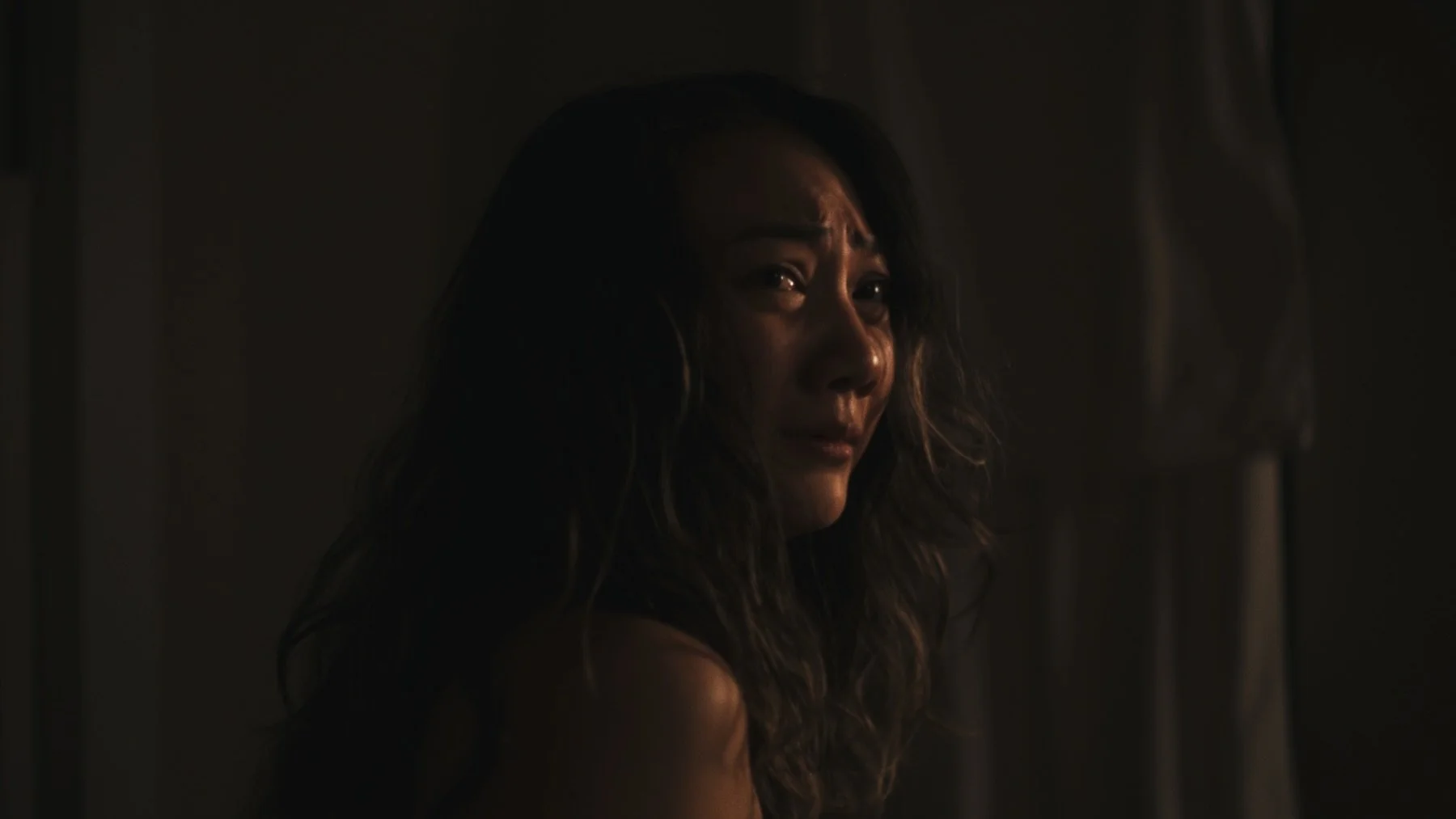Andrew Bell on Bleeding, Horror, and Seattle’s Filmmaking Scene
Andrew Bell in Bleeding
press kit
Andrew Bell is a Seattle-based filmmaker whose feature debut, Bleeding (2024), has received attention from the broader horror community in the past year. The film follows teenage cousins Eric (John R. Howley) and Sean (Jasper Jones), in a world where vampire blood is a highly addictive drug. While on the run from Sean’s dealer, they run into a sleeping teenager (Tori Wong) locked in a house, and things spiral into a morbid nightmare. Bleeding tackles intense real-world problems while maintaining the heightened fantasy of horror. The film is also grounded in impressive lead performances. The Echo talked to Andrew about the gritty process of making a low-budget independent horror film and the Seattle filmmaking community he is helping to build at Hugo House.
Gray Harrison (GH): Did your film go through a festival circuit? What was the process of getting it out there?
Andrew Bell (AB): We finished this film the summer before last summer, and then we went on a festival run. We opened at Grimmfest in the UK. …We had a US premiere at Dances with Films in New York and went to Brazil, Mexico, and some other cool places. Midway through that, we ended up getting the film to some connections we had at Bloody Disgusting and ScreamBox, Bloody Disgusting’s streaming service. They liked the film and we liked the things they were saying to us, so we decided to go with them.
GH: When did you first develop the idea for the film?
AB: It would have been 2019. It was originally supposed to be my thesis when I was at Columbia University getting my MFA. It was way different then. It was much more about two 14-year-old kids. One takes the other one out into the woods to smoke their first joint and gets them to break into this house—kind of the first act of the film, but definitely different.
We had the entire van packed and ready to go, and then that night we got a call from the heads of the department and the School of the Arts being like, “Hey, there’s this thing. We don’t know what it is. It’s COVID or something.” We ended up canceling the shoot and planning on pushing it a couple weeks. A couple weeks turned into months, at which point I’d moved back home to the Pacific Northwest. I was living in my childhood home there, and all the stuff I went through as a teenager—what people around me went through—came rushing back. I said, “Hey, maybe I can turn this into a feature. I want to spend a bunch of time doing something. I don’t need another short. I should make it into a feature.”
GH: One of the things I really liked about this movie was the cinematography and the use of shadows, especially the interiors. I was curious how much of that was imposed artificially and how much was natural light? It was hard to even see at times, but that seemed intentional.
AB: Definitely. How we wanted to use light was something we thought a whole lot about in the earliest parts of pre-production. My DP, Daniel Cho, who was only 25 years old when he shot this…We were really specific about how we wanted to use light, because it’s a vampire movie. I think that’s important, and we wanted light to mean and represent something, and darkness too. We really wanted to play with shadows. We were looking at a lot of older photography—a lot of noir stuff. We embraced natural light and then we would add to the light to shape it.
Jasper Jones as Sean and John R. Howley as Eric in Bleeding
press kit
GH: Where were you filming?
AB: It was largely in Upstate New York. We didn’t have any money at all, so we would find various Airbnb locations that were foolish enough to let us shoot there for cheap. Dustin’s house is the same house that you see in the opening, and I think it’s triple used elsewhere too. It was our producer’s parents’ house. They had just moved in, so we were able to have that one set and really dress it in different ways.
GH: This movie was really gnarly. Both sound effects and visual effects and tonally, it was ruthless. And I liked that, but it was also emotionally challenging. I think a lot of vampire films glamorize it in a fun way. It can be very sexy and fun. But this took a different approach, especially with the addiction theme. How heavy-handed did you want to go with addiction?
AB: We never wanted to be too heavy-handed with it, but it was something that was always in our minds thematically. When I was growing up around here in the early 2000s, that’s when the opioid crisis and early days of a specific part of it—prescription drugs—was going on, so we were trying for pretty direct parallels for things I went through emotionally watching friends slip into addiction and trying to hold onto them as they’re self-exploding.
At the same time, we didn't want it to be a direct parallel with the drug. We wanted it to be its own thing and create its own world. We worked with a movement director (Jay Dunn) who also plays Hank, Sean’s dad, to help us really shape how the drugs are affecting the bodies of our performance, both in Monster Mode, but also doing the overdose stuff. We wanted to be really respectful and also not put the pressure of creating something like that out of nothing on the backs of performers who are in their early 20s. It’s really demanding physically for the actors. A big part of the film is obviously about drug use and addiction and trauma and grief, but also we wanted it to be about family and loving people who are hurting when you’re hurting, which I think a lot of people can hopefully relate to.
GH: That was the core for me, the cousins and their love for each other. It was heartbreaking because they were making bad decisions but also trying to save each other at the same time. I think that’s a very real thing with family. I also liked the interplay of their personalities, with Sean being more charismatic and unruly, but then stepping up right at the end when he was needed.
AB: A moment ago, you mentioned the sound design. That was Alex Symcox. He also did the score for us, and we worked so, so hard on it. He and I just went up into this cabin out in the middle of the woods that he had just bought with his wife and spent weeks chipping away at that. It was a really cool process and we worked really hard on it, so I’m glad that it’s something that stood out to you.
GH: There were specific moments, like when Sara is coming out of her more feral state back to reality. There was some really interesting sound coming out of her. I was like, ‘I’m not sure what this sound is. I don’t even know if I’ve heard this sound before.’
AB: All the sounds that were coming out of her were coming out of her. We played with them and embellished them just a little bit. It was one of those things where we hadn’t rehearsed that stuff a lot ahead of time. We wanted to keep it a little fresh. And it was one of those days where it’s like, “What’s gonna happen here when we turn the camera on?” And she just did some shit. Everyone on set was like, “Where did that come from?” Making an independent film is very, very hard, and you’re doing it and you’re like, “Why am I doing this? This is a trainwreck,” and that was one of the early moments for us of, “Okay, this is what we’re making,” and that’s when you see your movie. And I saw that with each of our leads.
Tori Wong as Sara in Bleeding
press kit



